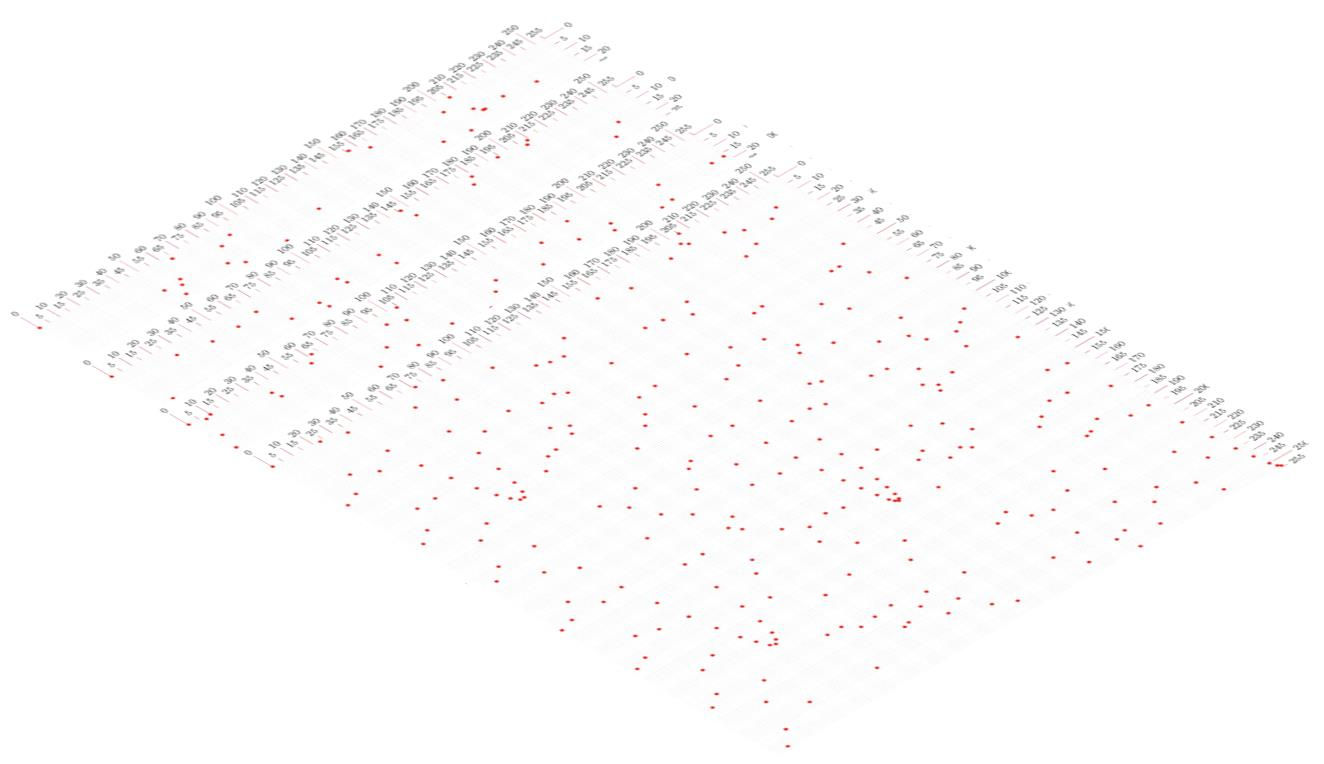PQI Consulting LLC
PQICLLC Products
The Finest In Analytical And Communications Products And Services


Arbitrary Precision Nomographic Analytical Calculation (APNAC) Application Specific Integrated Circuit
(APNACASIC)
The APNACASIC is a revolutionary patent-pending (USPTO #18/524,639) electronic microprocessor architecture that uses a set of stacked dynamic electrically erasable programmable read-only nomographic grid layers to calculate (output) an arbitrarily-precise evaluation of an arbitrary mathematical function or its inverse using an arbitrarily closely-separated discrete set of domain values (input).
The APNACASIC is controlled on-board by a programmable algorithmic logic module using APNAC/RAC™ technologies that allows for selective re-use of the nomographic layers for the calculation of varying or dependent precision results. The EEPROM capabilities of the nomographic grid allows for hot-swaps of the stored linkages in the grid, thereby allowing the implementation of arbitrary complicated algorithms to complete any number of mathematical function evaluations to arbitrary precision.
As with all PQI Consulting LLC products, we stand behind the APNACASIC with expert support services that will help our customers implement highly-flexible, completely customizable, and uniquely programmable APNACASIC functionality as an embedded system within their own products and systems.

PQICSTAT™
PQICSTAT™ is a collection of analytical high-level through assembly-level software and Hardware Descriptive Language (HDL) modules that implement algorithms for complicated mathematical and statistical calculations to an arbitrary level of precision in any computing environment (where compiled code may execute) or as an embedded hardware subsystem. APNAC/RAC technology is an example of PQI Consulting LLC analytical calculation architecture design implemented using PQICSTAT™ methodologies. RAC refers to the exclusive use of rational numbers arithmetic and conversions, thereby eliminating calculation error and giving the implementing analyst complete control of the precision at which all calculations, including indeterminate results, are made.
PQICSTAT™ is the proprietary programming tool PQI Consulting LLC uses to provide its customers with the finest computer software and analytic hardware design, writing, implementing, revising, and updating services.
Download Our Information Brochure HERE.


Surveillance System For The Optimal Calculation Of Real-Time Simultaneous Locations Of Multiple Targets (SSOC)
A surveillance system for using the known locations in a given 2- or 3-dimensional frame of reference of possibly moving (in a known path) or statically located detection units for the simultaneous calculation in real-time of the locations of multiple targets that are transmitting a coded identification signal at regular time intervals. The calculated position for each target consists of a point in the frame of reference most likely to be the actual position of the target (based on the expected variability of the coded identification signals),
along with a probability map (a 2-dimensional ellipse or 3-dimensional ellipsoid), separately for each target, presenting the likelihood of the actual position of the target being within a particular region of the frame of reference.
Device For Secure Colorimetry Communications
(DSCC)
A device for securely communicating arbitrarily formatted information through the encoding/decoding of specialty proprietary-formatted text into discrete electromagnetic signals (for example, into various colors of light). Security is provided by a double-layer of masking encryption. Any information that may be interpretable in the proprietary-formatted text, for example, using any well-defined, printable or non-printable, language character set, may be transmitted by the device.
System For Optimal Intersection Throughput
Using Generative Artificial Intelligence (SOIT)
The SOIT is an algorithm and mechanism whereby an arbitrary number of actors, which may be any discrete unit of movement regardless of destination after traversing an intersection, and regardless of arrival time at the intersection, may pass through that intersection in an optimal manner. The algorithm used to optimize the throughput is based on a Generative Artificial Intelligence Machine Learning (GAIML) approach, in the sense that distributions of actors counts and positions in the queue and during incomplete transits through the intersection that have been analyzed in the past are used in place of recalculating those same analyses. In this respect, a history of prior results informs the algorithm when it has “seen this arrangement before,'” and thereby knows immediately how to optimize the throughput with that arrangement. When the distribution of actor counts and positions in the queues and during incomplete transits through the intersection has not been encountered before, an optimal algorithm is calculated and stored in the history for future use. This approach therefore combines the training and testing phases of GAIML into an iterative process within a single application.

Coming Soon
Please return often to the PQI Consulting LLC website for additional products and support services.

